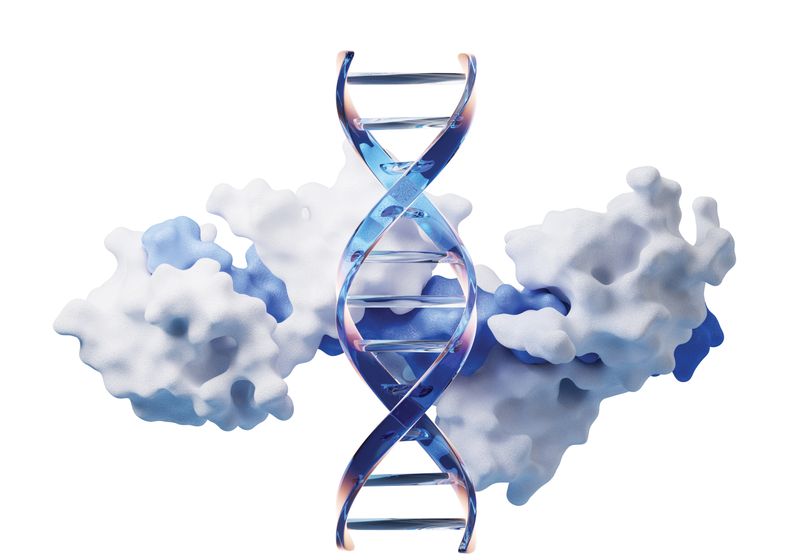Researchers are using NGS-based proteomics to analyze thousands of proteins, linking genetic variants to disease mechanisms.
Genomics offers a foundation for understanding disease, but proteomics reveals invaluable insights by offering a real-time look at protein activity. Proteogenomic studies are advancing thanks to next-generation sequencing (NGS)-based proteomics, which allows researchers to measure thousands of proteins from tiny samples with high specificity and reproducibility.
Cindy Lawley, PhD Senior Director, Global Population Health Olink Proteomics (part of Thermo Fisher Scientific)
In this Innovation Spotlight, Cindy Lawley, the senior director of Global Population Health at Olink Proteomics (part of Thermo Fisher Scientific), introduces NGS-based proteomics and highlights the technology’s important role in the UK Biobank Pharma Proteomics Project (UKB-PPP), which aims to produce and share large-scale data for the betterment of human health.
What can proteomics tell us beyond information obtained through genomics studies?
Proteomics provides functional and dynamic insights in addition to genomics, as demonstrated through publications based on data generated in the UK Biobank Pharma Proteomics Project (UKB-PPP) in collaboration with Olink. By profiling ~3,000 plasma proteins across over 54,000 individuals, researchers uncovered over 14,000 protein quantitative trait loci (pQTLs), 81 percent of these represent novel genetic-protein associations and associations to disease.
These discoveries reveal how genetic variants translate into changes in protein expression, deepening our understanding of disease biology. An integrated proteogenomic approach strengthens the connection between genetic risk and actual disease pathways, sharpening tools for risk prediction, biomarker discovery, and therapeutic development.
What is NGS-based proteomics, and how does it work?
Olink’s NGS-based proteomics is powered by its proprietary Proximity Extension Assay (PEA), a protein identification and quantification technology that combines dual antibody recognition with specific DNA amplification. This approach is compatible with both NGS and qPCR readouts, allowing flexibility based on throughput needs. It enables multiplexed detection of hundreds to thousands of proteins from minimal sample volumes (~2 uL) while delivering exceptional specificity, high precision, and a broad dynamic range.
How does NGS-based proteomics differ from traditional proteomics approaches?
Unlike traditional proteomics, which typically relies on mass spectrometry, NGS-based proteomics uses DNA-labeled probes and NGS to quantify proteins. This enables ultra-high throughput analysis and sensitivity to low abundant proteins in fluid/plasma, making it ideal for large-scale cohort studies, whereas traditional methods are better suited for smaller studies. NGS-based approaches use predefined protein assay libraries that offer high specificity and sensitivity, in contrast to the often untargeted discovery focus of traditional methods. NGS proteomics integrate seamlessly with genomics and transcriptomics data generated by NGS platforms, supporting multiomics studies. Additionally, the NGS-based proteomics workflow is easier to standardize, reducing technical variability and improving reproducibility across laboratories and studies.
What is the UKB-PPP, and how is Olink Proteomics involved?
UKB-PPP is a collaboration between UK Biobank and 14 leading biopharmaceutical companies, with the goal to make important information on the human proteome available to UK Biobank-approved researchers across the world. In turn, the data can be used to validate and identify new drug targets, advance diagnostics, and help accelerate targeted drug discovery to support the development of safer and more effective medications. UKB-PPP aims to analyze over 5,400 proteins from 600,000 samples to fuel the discovery of new protein biomarkers that can be used to predict, diagnose, and treat diseases.

Researchers participating in the UKB-PPP are using NGS-based proteomics to analyze 600,000 biobanked samples, enabling large-scale protein biomarker discovery.
©iStock, iLexx
In the UKB-PPP pilot phase, researchers used the Olink Explore 3072 to measure around 3,000 proteins in over 54,000 participants. This led to three landmark Nature papers published in 2023.1-3 In one paper, the researchers uncovered over 14,000 protein quantitative trait loci, with 81 percent representing novel genetic-protein associations.1 The pilot dataset was then made publicly available, enabling a “measure once, query often” approach. In 2024 alone, over 100 peer-reviewed studies using these Olink UKB-PPP data were published, spanning all major disease areas and highlighting the project’s value for advancing drug development and healthcare.
For the ongoing full-scale study, Olink® Explore HT was selected as the NGS-based proteomics platform, powering the largest initiative of its kind to advance precision medicine and a better understanding of disease.
How are scientists applying what they learn from these population proteomics studies?
A study utilizing data from the UKB-PPP analyzed plasma protein levels in over 40,000 individuals.4 The researchers developed predictive models for 218 diseases, identifying protein signatures that could forecast the onset of 67 conditions—including cancers, heart failure, and autoimmune diseases—up to 10 years before clinical symptoms appeared. These models outperformed traditional diagnostics based on standard clinical markers such as cholesterol levels.
Where do you think NGS proteomics will have the greatest effect in the future?
NGS-based proteomics gives real-time insights into dynamic biological changes using minimally invasive samples, with an accessible workflow and data analysis. As such, it has enormous potential to drive improvements in future healthcare. Early diagnosis, monitoring of disease progression, selection of more effective tailored therapies, and assessment of therapeutic responses and outcomes will all benefit from this approach.


